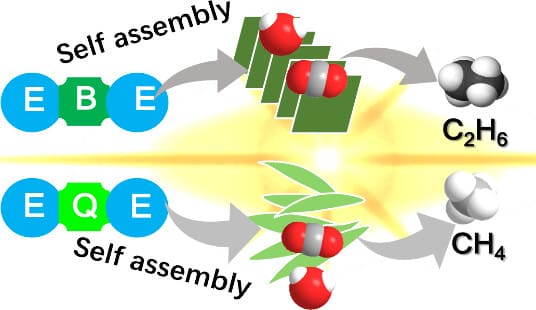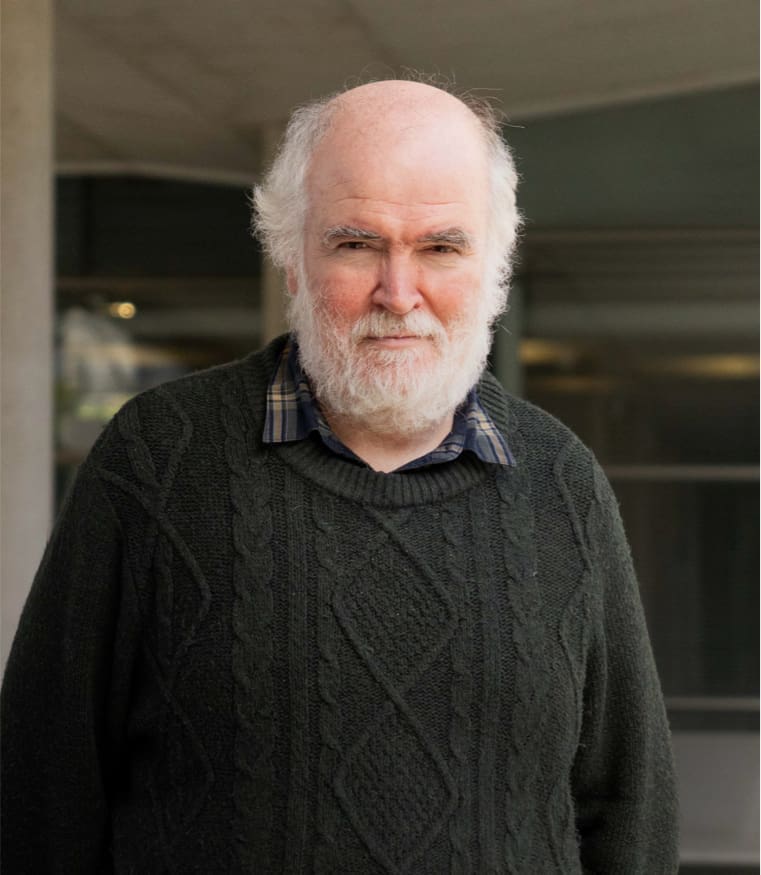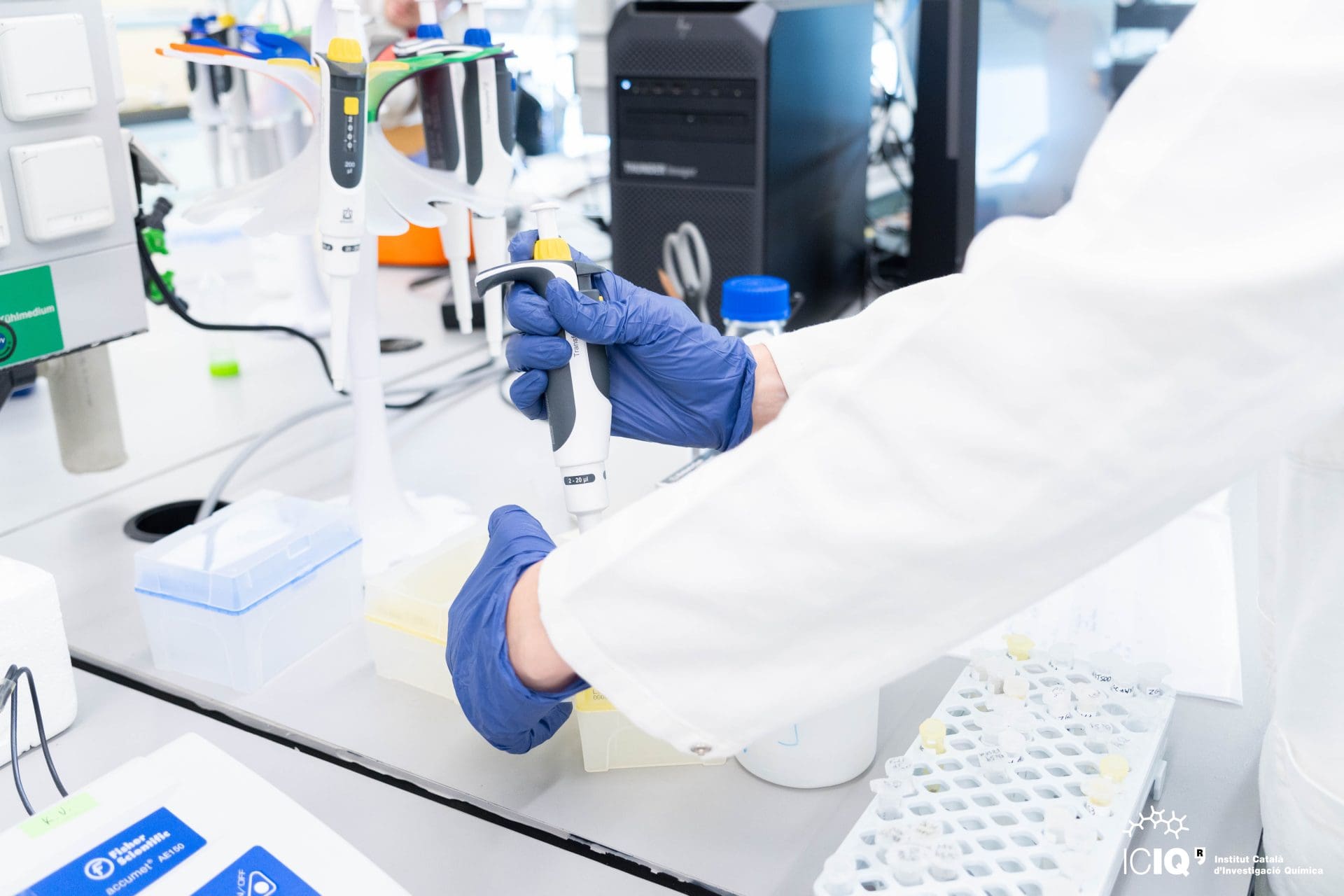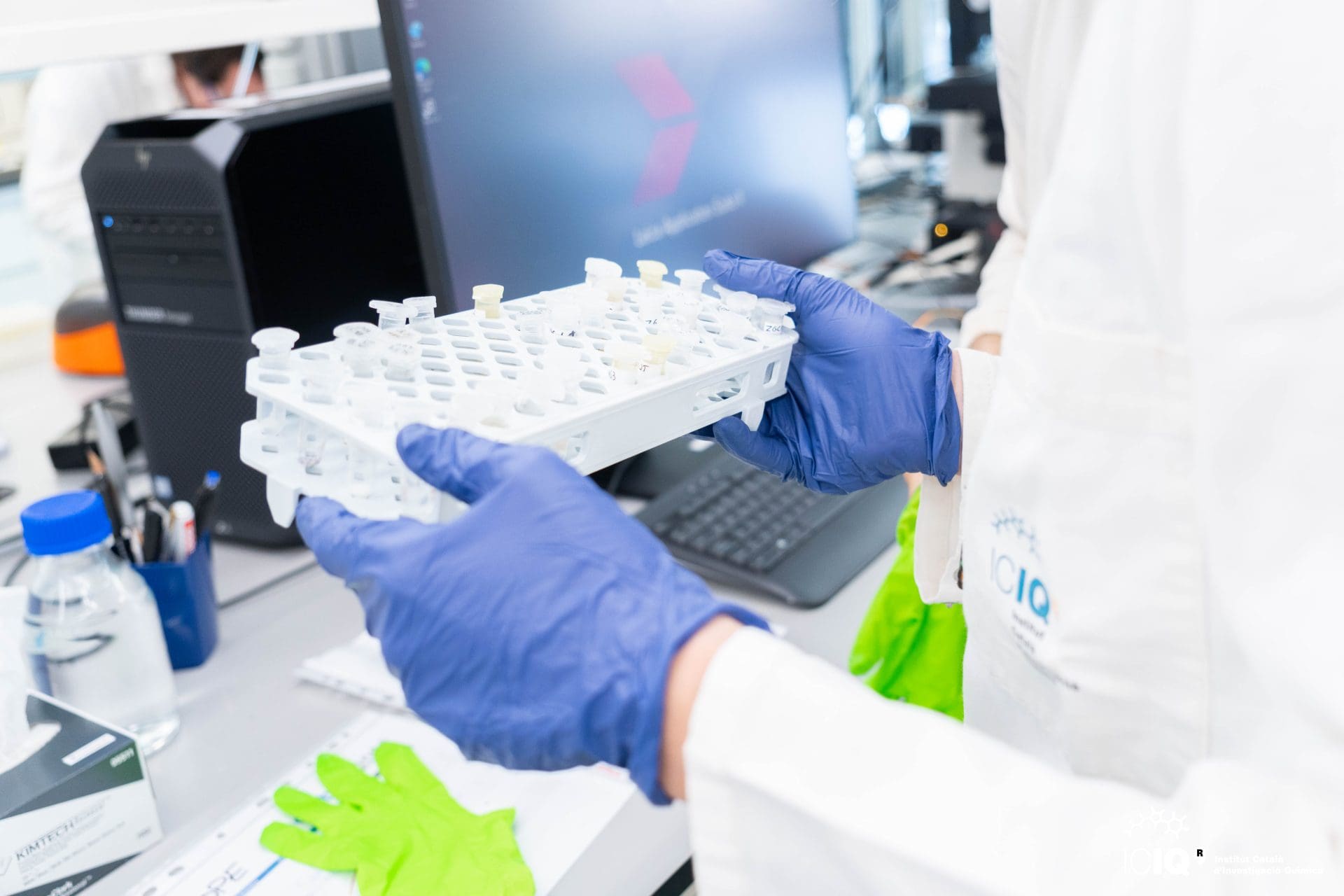Gas-Phase Photocatalytic CO₂ Reduction to Ethane via EDOT-Based Trimers
The photocatalytic conversion of CO2 into fuels and high-value chemicals is a promising strategy to counteract the negative impact of greenhouse gas emissions. While most studies focus on UV-responsive semiconductors, few evaluate photocatalytic performance in the gas phase under visible light. In this work, we introduce 3,4-ethylenedioxythiophene (EDOT)-based conjugated trimers as visible-light-responsive photocatalysts for CO2 conversion in the gas phase. We examine how changes in the acceptor units of these donor–acceptor–donor trimers affect their molecular arrangements and photocatalytic performance. By tuning the acceptor units, we achieve different aggregate states, which enable us to modulate product selectivity, shifting from C1 to C2 products with high stability for over 10 h of light exposure under continuous gas flow. We attribute these variations to differences in energy band alignment, excited-state delocalization, and optical absorption properties linked to molecular packing. Moreover, the crucial roles of Cu as a cocatalyst and TEOA as a sacrificial agent in enhancing selectivity toward C2 products were also discussed. The integration of experimental findings with density functional theory (DFT) calculations provides comprehensive insights into the molecular-level mechanisms driving selectivity and efficiency. Our study demonstrates that visible-light-responsive organic trimers can effectively convert CO2 to C2 value-added products in the gas phase, contributing significantly to the development of solar-driven fuel production.

Yuan, X.; Solé-Daura, A.; Li, C.; Díaz-Ruiz, M.; Liguori, N.; Biset-Peiró, M.; Murcia-López, S.; Luxa, J.; Sofer, Z.; Galán-Mascarós, J. R.; Maseras, F.; Villa, K.
ACS Catal. 2025, 15, 6186–6198
DOI:
10.1021/acscatal.4c07788
Associated projects:
-
Junior Leader "la Caixa" | Katherine Villa
The alarming increase of CO₂ levels, due to anthropogenic and industrial activities, has become a serious environmental issue nowadays. A plausible solution to minimize the negative impact of CO₂ emissions is by developing carbon-neutral approaches, i.e., reduction of CO₂ into valuable compounds. This research project deals with the development of efficient photocatalytic systems for the gas-phase conversion of CO₂ in the presence of water under sun-like irradiation.
See more -
PhotoClean
Water contamination caused by anthropogenic and industrial activities is considered a serious environmental issue nowadays. In particular, the selective removal of low concentrations of toxic persistent organic pollutants from contaminated water that contains high concentrations of less harmful pollutants remains a great environmental challenge. This research project (PhotoClean) deals with the development of efficient self-propelled photocatalytic microswimmers with surface recognition sites for the removal of persistent organic pollutants from contaminated water under sun-like irradiation.
See more -
NEWBOUND
Electrolysis is a promising technology to support the industrial decarbonization. Substitution of fossil by green fuels obtained from renewable energy and electrolyzers could transform the energy cycle, allowing for a rapid transition towards sustainable processes. Electrolysis advantages go even further. It could also contribute to the industrial electrosynthesis of chemical commodities. However, improved low-cost, fast and efficient processes are needed. And also highly selective to attempt the large scale electrosynthesis of chemical products. Our research team has studied electrocatalysts for the oxygen evolution reaction (OER), the bottleneck for the production of green hydrogen from water.
See more -
NANOLYMPICS
The NANOLYMPICS project aims to develop innovative solutions for tackling water contamination, paving the way for a cleaner and healthier environment. Light-driven nanoswimmers have demonstrated great potential in various applications involving photocatalysis, such as environmental remediation. However, we still lack a comprehensive understanding of their photophysics and how different configurations affect their efficiency. This knowledge gap hinders the development of a rational approach to designing efficient nanodevices.
See more -
Junior Leader "la Caixa" | Albert Solé-Daura
Spin-forbidden reactions play a central role in a wide variety of fields, including catalysis, materials science, and photochemistry. However, very little is known about the mechanisms governing these processes at the atomic level, hindering the development of design rules to improve their efficiency. This knowledge gap arises from the prohibitively high computational cost associated with current simulation methods, which typically limits their scope to exceedingly small systems in the absence of an explicit environment. Consequently, the vast majority of systems suited for practical applications remain largely unexplored. Therefore, more affordable computational strategies are clearly needed to bridge the current gap between systems amenable to computational study and those employed in experimental applications.
See more

Let's create a brighter future
Join our team to work with renowned researchers, tackle groundbreaking
projects and contribute to meaningful scientific advancements




























